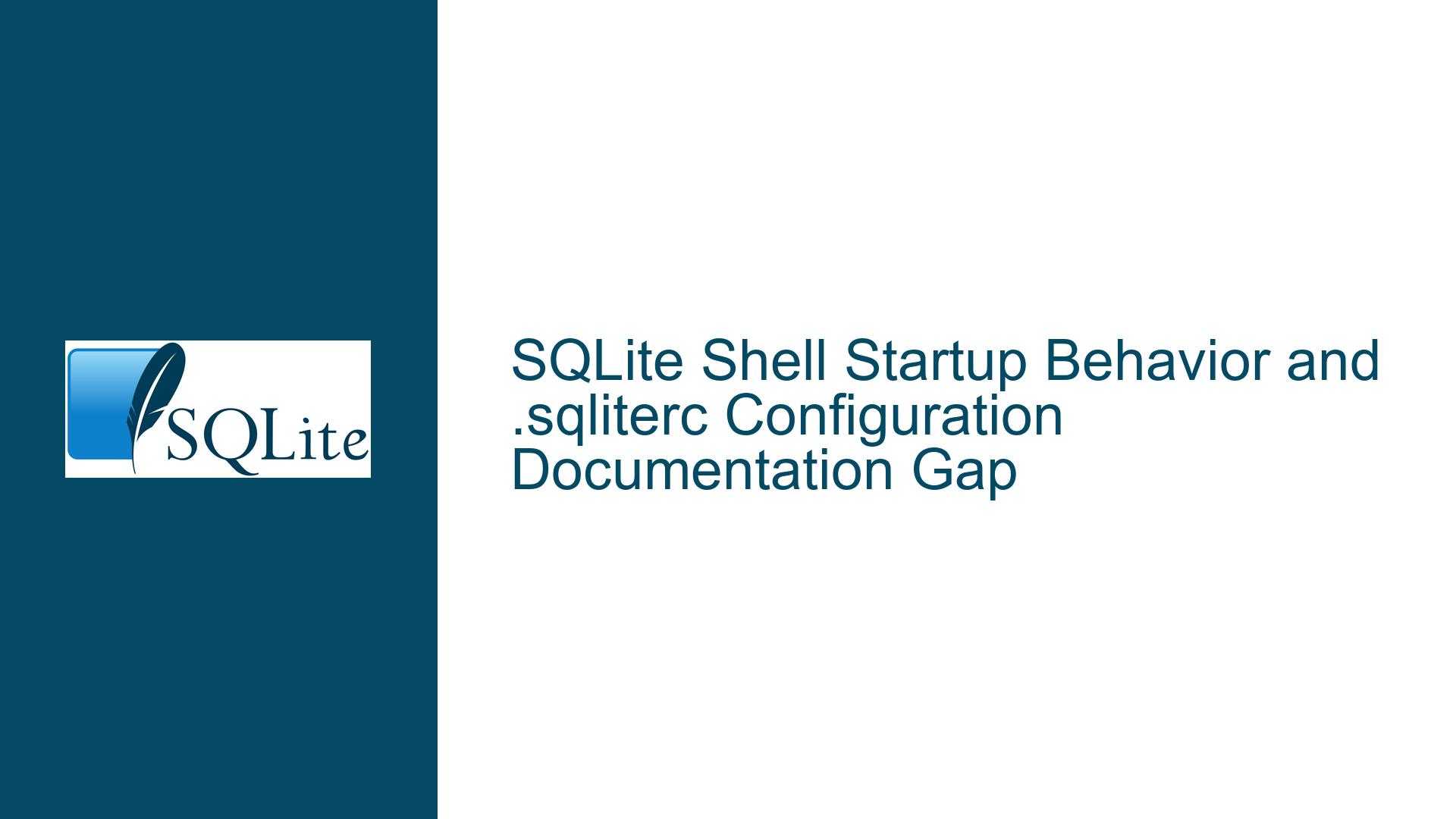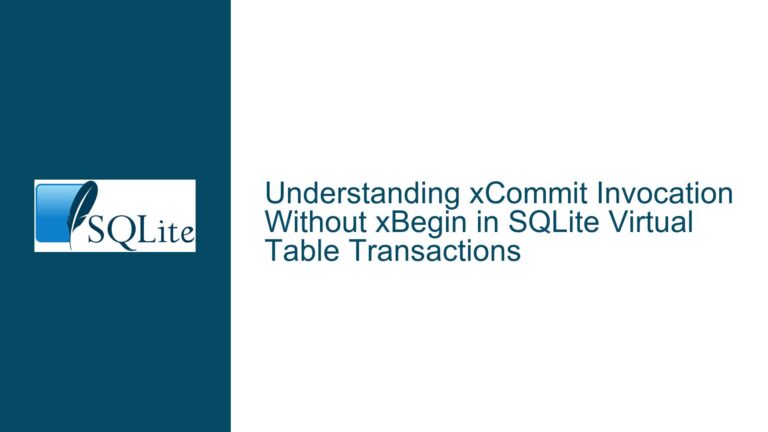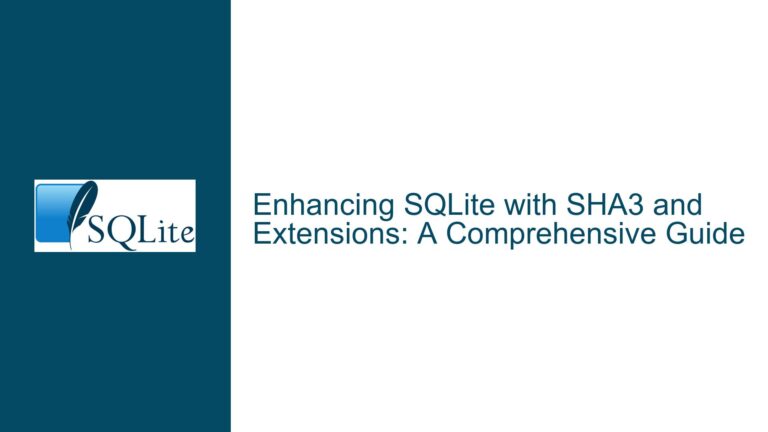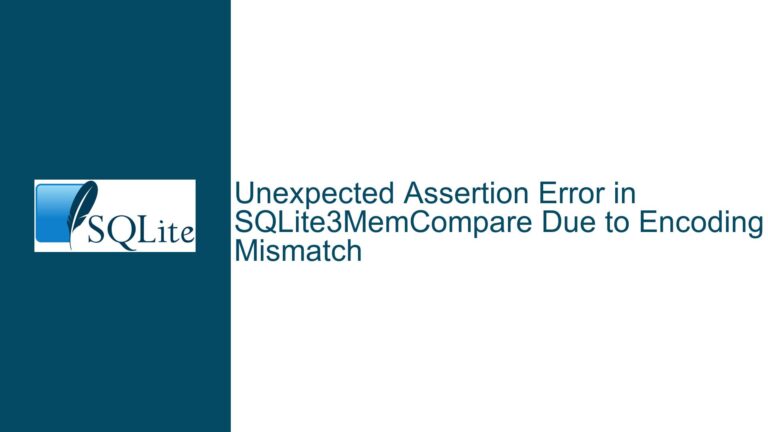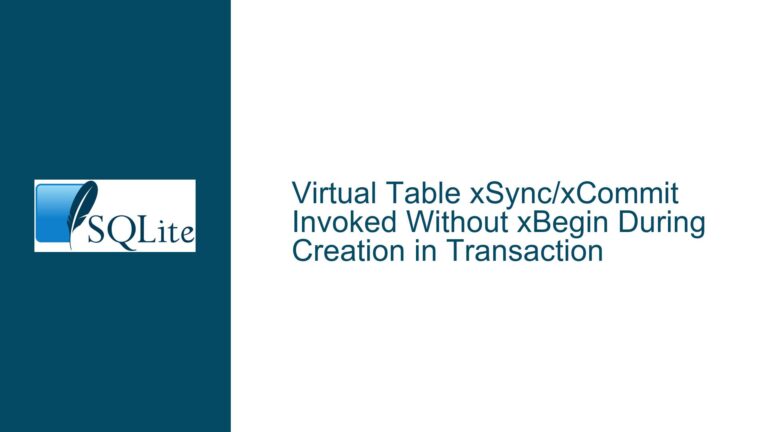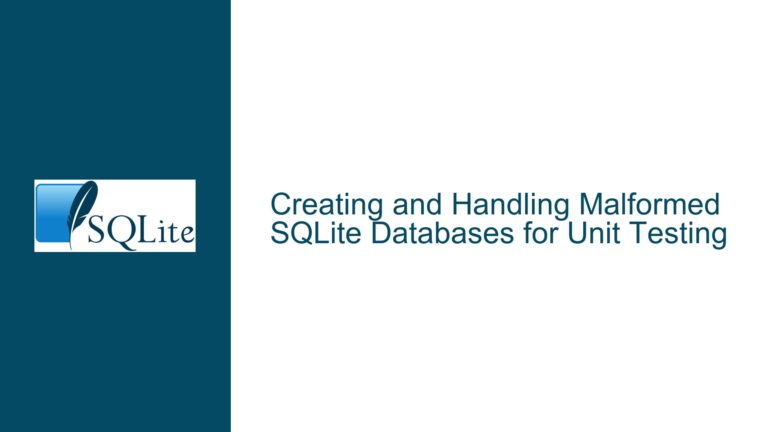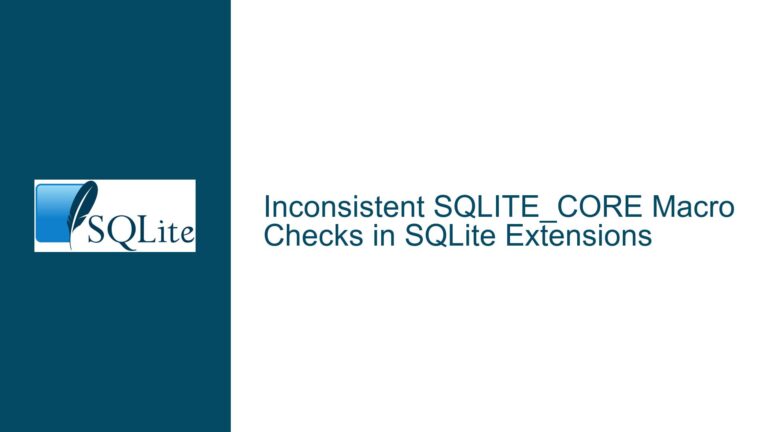SQLite Shell Startup Behavior and .sqliterc Configuration Documentation Gap
SQLite Shell Startup Behavior and .sqliterc File Handling
The SQLite shell, a command-line interface for interacting with SQLite databases, exhibits a specific startup behavior that is not currently documented on the official SQLite shell documentation page. This behavior involves the automatic reading of a configuration file named .sqliterc (or its equivalent on different operating systems) located in the user’s home directory. The .sqliterc file allows users to predefine commands and settings that the SQLite shell should execute upon startup, enhancing user experience by automating repetitive tasks or customizing the environment.
The absence of documentation regarding this feature poses a challenge, particularly for users who are not familiar with the SQLite shell’s source code or external resources such as Linux man pages. This gap in documentation can lead to confusion, especially for Windows users who may not have easy access to equivalent resources. The .sqliterc file is a powerful tool for customizing the SQLite shell environment, and its proper use can significantly streamline database interactions. However, without clear documentation, users may remain unaware of this feature or may struggle to understand its implementation and benefits.
The .sqliterc file is read automatically when the SQLite shell starts, and any commands contained within it are executed before the shell becomes interactive. This allows users to set up their preferred environment, such as configuring output formats, setting PRAGMA values, or defining custom functions. The lack of documentation on this feature means that users who could benefit from these customizations may not be aware of the possibility, leading to a less efficient workflow.
Furthermore, the relationship between the .sqliterc file and the .init command is another area that requires clarification. The .init command is used to specify a script file that the SQLite shell should execute upon startup. However, the order in which the .sqliterc file and the .init command are processed is not clearly documented. This ambiguity can lead to confusion when users attempt to configure their SQLite shell environment, as they may not understand the sequence in which these configurations are applied.
Undocumented Startup Sequence and Configuration Precedence
The core issue revolves around the undocumented startup sequence of the SQLite shell and the precedence of configuration files and commands. When the SQLite shell starts, it follows a specific sequence of operations to initialize the environment. This sequence includes reading the .sqliterc file, executing the .init command, and applying any command-line arguments provided by the user. However, the exact order in which these operations are performed is not clearly documented, leading to potential confusion and misconfiguration.
The .sqliterc file is typically located in the user’s home directory and contains a series of SQLite commands that are executed automatically when the shell starts. This file is particularly useful for setting up a consistent environment across multiple sessions, as it allows users to define their preferred settings without having to manually enter them each time. However, the lack of documentation on this feature means that many users may not be aware of its existence or how to use it effectively.
The .init command, on the other hand, allows users to specify a script file that the SQLite shell should execute upon startup. This command is useful for running a series of commands that are specific to a particular project or task. However, the relationship between the .sqliterc file and the .init command is not clearly documented, leading to uncertainty about which configuration takes precedence when both are used.
In addition to the .sqliterc file and the .init command, the SQLite shell also accepts command-line arguments that can be used to configure the environment. These arguments can override the settings defined in the .sqliterc file or the .init command, but the exact precedence of these configurations is not clearly documented. This lack of clarity can lead to unexpected behavior, as users may not be aware of how their configurations will be applied.
The undocumented startup sequence and configuration precedence can also lead to issues when users attempt to migrate their configurations between different systems or environments. For example, a user who has developed a set of configurations on a Linux system may encounter difficulties when trying to apply the same configurations on a Windows system, where the file paths and environment variables may differ. Without clear documentation on how the SQLite shell handles these configurations, users may struggle to achieve a consistent environment across different platforms.
Clarifying SQLite Shell Startup Behavior and Enhancing Documentation
To address the issues arising from the undocumented startup behavior and configuration precedence of the SQLite shell, it is essential to provide clear and comprehensive documentation. This documentation should cover the following aspects: the automatic reading of the .sqliterc file, the use of the .init command, and the precedence of command-line arguments. By clarifying these aspects, users will be better equipped to configure their SQLite shell environment effectively and avoid potential pitfalls.
The documentation should begin by explaining the purpose and location of the .sqliterc file. This file, located in the user’s home directory, contains a series of SQLite commands that are executed automatically when the shell starts. The documentation should provide examples of common configurations that can be included in the .sqliterc file, such as setting output formats, configuring PRAGMA values, and defining custom functions. Additionally, the documentation should explain how to create and edit the .sqliterc file, including any platform-specific considerations.
Next, the documentation should address the use of the .init command. This command allows users to specify a script file that the SQLite shell should execute upon startup. The documentation should explain how to use the .init command, including the syntax for specifying the script file and any command-line arguments that may be required. Additionally, the documentation should clarify the relationship between the .sqliterc file and the .init command, including the order in which they are processed and any potential conflicts that may arise.
The documentation should also cover the precedence of command-line arguments in relation to the .sqliterc file and the .init command. Command-line arguments can override the settings defined in the .sqliterc file or the .init command, but the exact precedence of these configurations is not clearly documented. The documentation should provide clear guidelines on how command-line arguments interact with other configurations, including any potential conflicts and how to resolve them.
In addition to clarifying the startup behavior and configuration precedence, the documentation should also provide guidance on best practices for configuring the SQLite shell environment. This includes recommendations for organizing configurations, managing multiple environments, and troubleshooting common issues. By providing clear and comprehensive documentation, users will be better equipped to take full advantage of the SQLite shell’s capabilities and avoid potential pitfalls.
To further enhance the documentation, it may be beneficial to include a section on advanced configurations and customizations. This section could cover topics such as defining custom functions, using SQLite extensions, and integrating with other tools and scripts. By providing detailed guidance on these advanced topics, users will be able to unlock the full potential of the SQLite shell and tailor it to their specific needs.
Finally, the documentation should include a troubleshooting section that addresses common issues and provides solutions. This section should cover topics such as resolving configuration conflicts, debugging startup scripts, and recovering from errors. By providing clear and actionable guidance, users will be able to quickly resolve any issues they encounter and maintain a stable and efficient SQLite shell environment.
In conclusion, the undocumented startup behavior and configuration precedence of the SQLite shell can lead to confusion and misconfiguration. By providing clear and comprehensive documentation, users will be better equipped to configure their SQLite shell environment effectively and avoid potential pitfalls. This documentation should cover the automatic reading of the .sqliterc file, the use of the .init command, the precedence of command-line arguments, best practices for configuration, advanced customizations, and troubleshooting common issues. With this documentation in place, users will be able to take full advantage of the SQLite shell’s capabilities and achieve a consistent and efficient workflow.
